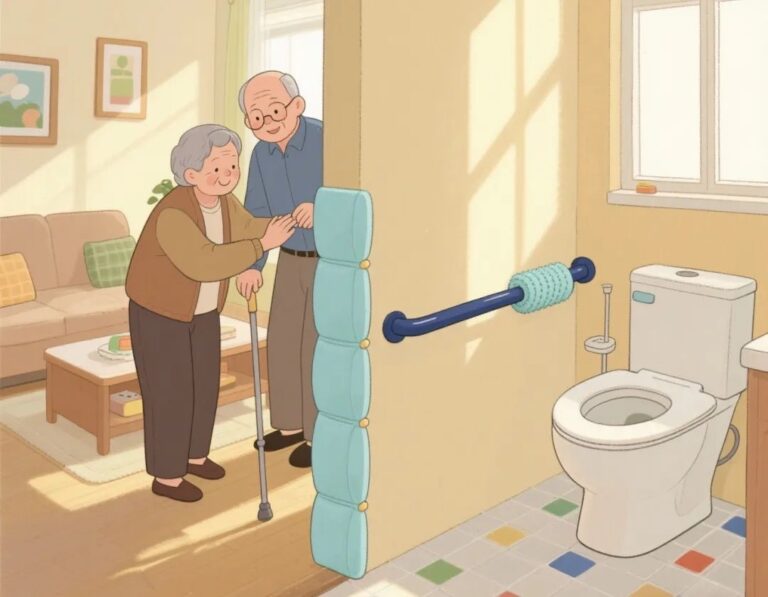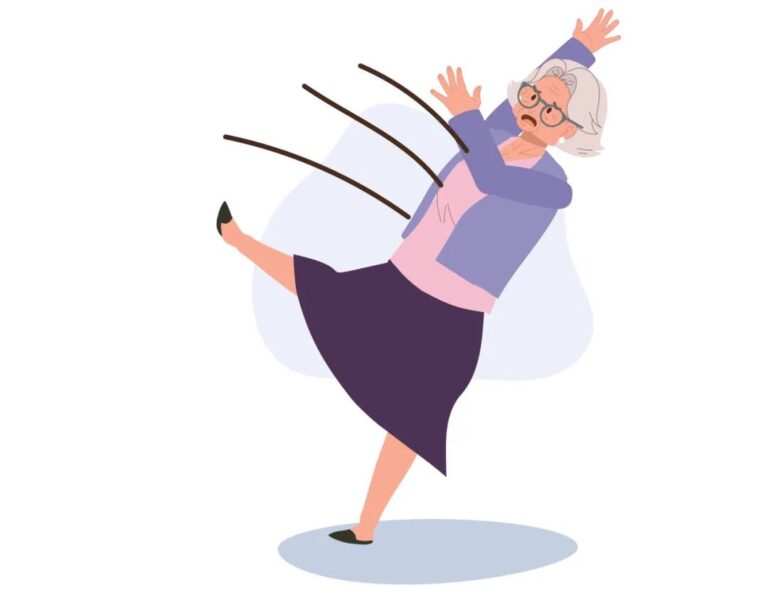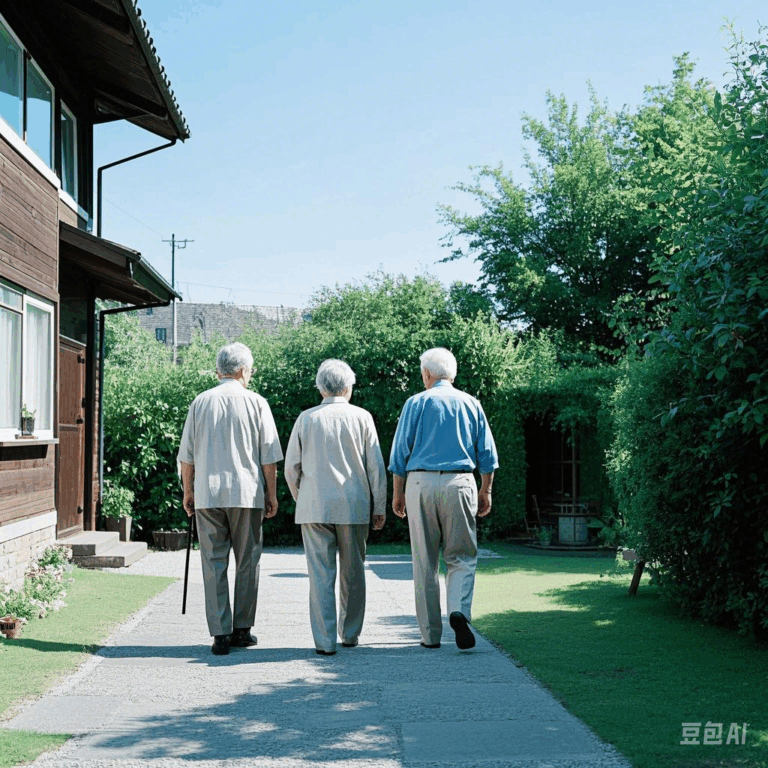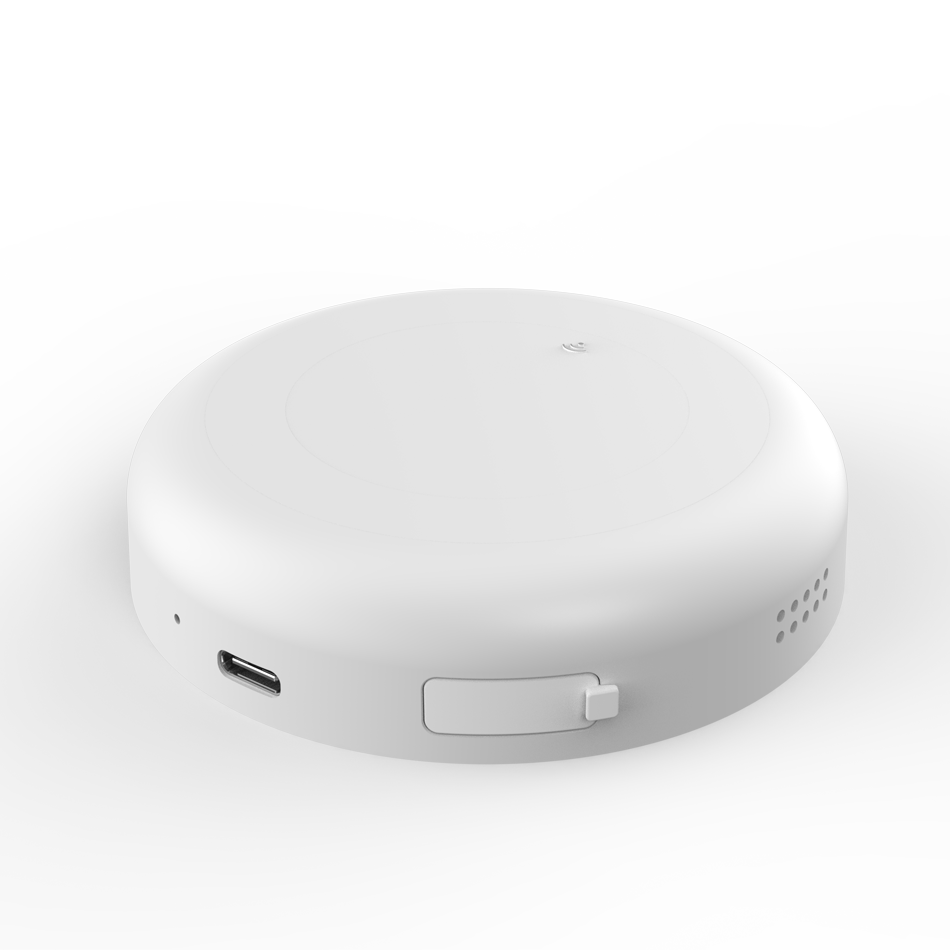
Os 7 Desafios do Envelhecimento em Casa & Soluções Práticas para a Independência dos Idosos
À medida que o envelhecimento global intensifica-se, um número crescente de indivíduos idosos estão optando por ‘cuidados em domicílio (envelhecimento no local)’. —— Eles optam por viver de forma independente em ambientes familiares. No entanto, esta escolha traz numerosos desafios. Este artigo explorará as questões centrais dos cuidados em domicílio para idosos e proporia soluções práticas integrando tecnologia e renovações amigáveis à idade, visando ajudar as famílias a criar um ambiente de vida mais seguro e confortável para seus anos finais.
1. Definição e Vantagens dos Cuidados em Domicílio
O que é cuidado em domicílio?
Cuidados em domicílio significa que os idosos não precisam morar em lares de idosos, mas podem passar seus anos idosos em suas próprias casas com apoio familiar, serviços comunitários e assistência tecnológica. Seus principais vantagens incluem:
- Continuação de emoção e vida: morar em um ambiente familiar, manter as antigas rotinas de vida e o círculo social, e reduzir o desconforto causado pelas mudanças ambientais.
- Cuidado personalizado: serviços de cuidado one-to-one fornecidos por familiares ou cuidadores profissionais para atender às necessidades personalizadas e evitar as limitações do cuidado institucional.
- Eficiência financeira: O custo total dos cuidados em domicílio geralmente é menor do que o de lares de idosos, especialmente para famílias focadas em planejamento econômico.
- Conexão social: Manter contato próximo com a comunidade, parentes e amigos pode ajudar a melhorar a saúde mental e a felicidade de vida.
2. Desafios Centrais e Soluções dos Cuidados em Domicílio
(1) O ambiente residencial não é adequado para envelhecimento
Desafiar:
- Designresidenciais tradicionais podem faltar em características sem barreiras (como escadas e degraus), aumentando o risco de quedas.
- Iluminação insuficiente, disposição inadequada de móveis ou operação complexa de eletrônicos afetam a mobilidade dos idosos.
- Inquilinos enfrentam restrições na reforma ou podem ter que suportar o custo adicional de restaurar a condição original após a reforma.
Medidas Contratáticas:
- Modificações básicas: Instalar correntes, pisos antideslizantes, lâmpadas noturnas de sensor, ampliar corredores e varandas, e remover tapetes e outros objetos de tropejo.
- Assistência tecnológica: Introduzir dispositivos inteligentes como luzes automáticas de sensibilidade, aparelhos domésticos controlados por voz, ou monitorar o status de atividade através de sensores de radiação milimétrica para alertar em tempo real de condições anormais (como quedas).
(2) Declínio fisiológico e cognitivo
Desafiar:
- Visão e audição ruins, perda de memória e condições crônicas (como artrite e doença cardíaca) podem levar a uma redução na mobilidade.
- Torna-se mais difícil lidar com tarefas diárias (como tomar medicamentos, cozinhar) sozinho e você precisa depender de outros para ajuda.
Medidas Contratáticas:
- Gestão de saúde: Exames físicos regulares, usando dispositivos de saúde inteligentes (como medidores de pressão arterial, monitores de sono) para acompanhar indicadores corporais.
Apoio ao cuidado: Familiares ou cuidadores ajudam a fazer planos diários, usam caixas inteligentes de medicamentos para lembrar os pacientes a tomarem os medicamentos, e introduzem sistemas de monitoramento de saúde remoto quando necessário.
(3) Isolamento e solidão social
Desafiar:
- Viver sozinho ou ter um círculo social menor pode levar à alienação emocional e aumentar o risco de depressão e declínio cognitivo.
- A falta de interação social diária pode levar a um enfraquecimento do sistema imunológico e problemas de saúde mental.
Medidas Contratáticas:
- Participação comunitária: Participar de universidades para idosos, grupos de interesse ou atividades de voluntariado para manter contato com o mundo exterior.
- Conexão tecnológica: interagir com amigos e familiares através de chamadas de vídeo, software social ou usar robôs de companhia e outros dispositivos para aliviar a solidão.
(4) Cuidadores familiares sobrecarregados
Desafiar:
- Filhos ou cônjuges como cuidadores principais podem enfrentar esgotamento físico e energético, ou até mesmo “queimadura de cuidador”.
- Cuidadores não profissionais podem levar a uma queda na qualidade de cuidado devido à falta de conhecimento em enfermagem.
Contromedidas:
- Colaboração multi-rol: Construa uma equipe de cuidado, introduza cuidadores profissionais ou serviços comunitários para dividir o fardo do cuidador primário.
- Serviços de respiração: Organize pausas regulares para cuidadores para evitar problemas de saúde causados pelo estresse de longo prazo.
(5) Pressão de custo do cuidado de longo prazo
Desafiar:
- Embora o cuidado em casa seja mais barato do que o cuidado institucional, no longo prazo, custos de enfermagem, despesas médicas e reformas domésticas podem ainda ultrapassar o orçamento.
- Idosos com renda limitada podem ter dificuldade em pagar cuidados 24 horas, equipamentos de reabilitação e outras despesas.
Contromedidas:
- Utilização de políticas: solicite subsídios governamentais ou projetos comunitários de cuidado com idosos (como auxílio de cuidado em casa, subsídio para adaptação à idade).
- Optimização de custo: priorize a compra de equipamentos econômicos para idosos ou escolha o método de aluguel para reduzir o investimento inicial.
(6) Transporte inconveniente limita a independência da vida
Desafiar:
- Idosos que abandonam a dirigência por motivos de saúde podem enfrentar dificuldades para se locomover em áreas onde o transporte público está mal desenvolvido.
- O processo complexo de aplicativos de táxi ou transporte público não é amigável para idosos ou para aqueles com função cognitiva em declínio.
Contromedidas:
- Apoio comunitário: utilize recursos como serviços de transporte de idosos e visitas médicas de voluntários para atender às necessidades de tratamento médico e compras.
- Ferramentas de viagem para idosos: use muletas inteligentes com localização por GPS, cadeiras de rodas elétricas ou agende um serviço de acompanhamento pessoal.
3. Criar um ambiente seguro e confortável em casa para idosos
(1) Avaliação e planejamento antecipados:
- Quando a função corporal ainda está boa, avalie os riscos de segurança em casa (como antiderrapante, iluminação, largura das passagens), e faça um plano de reforma faseada.
- Comunique expectativas de saúde à equipe médica e prepare planos de emergência antecipadamente (como uma lista de contatos de emergência e dispositivos de alerta médico).
(2) Adaptação de baixo custo à idade:
- Deve-se dar prioridade a áreas de alto risco (como banheiros e escadas) com corrimões e equipamentos antiderrapantes.
- Ajuste o layout de móveis para garantir que itens comuns estejam dentro do alcance e reduza movimentos perigosos como se curvar e escalar.
(3) Tecnologia habilita segurança e conveniência:
- Use dispositivos de alerta médico (como chamadores de emergência portáteis) para garantir acesso rápido a ajuda em caso de emergência.
- Introduza dispositivos domésticos inteligentes (como um sensor automático de incêndio, um sistema de monitoramento remoto) para reduzir o risco de viver sozinho.
(4) Construir uma rede de apoio:
- Mantenha contato próximo com vizinhos e familiares para estabelecer "grupos de ajuda mútua" para atender às necessidades diárias.
- Participe regularmente de atividades comunitárias para evitar isolamento social e expandir a rede de recursos de cuidado.
O cuidado com idosos em domicílio é uma forma de cuidado com idosos que enfatiza o cuidado humanitário. Apesar dos desafios apresentados por fatores ambientais, de saúde e sociais, através de planejamento científico, assistência técnica e apoio comunitário, idosos podem desfrutar de uma vida segura, independente e digna em suas casas familiares.
A chave está em identificar problemas potenciais cedo, utilizar ativamente recursos disponíveis e aproveitar a tecnologia amigável à idade para melhorar a qualidade de vida.






